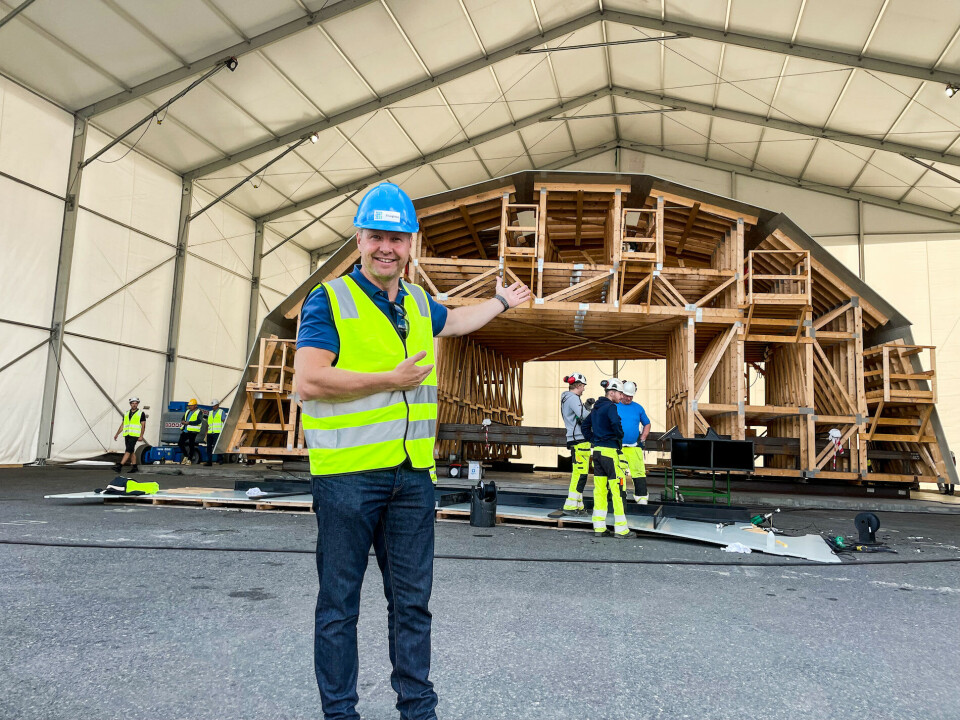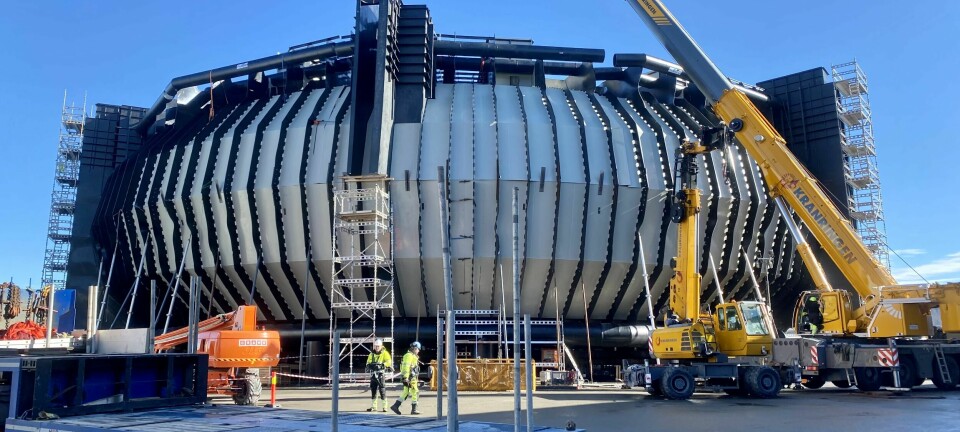
Will the Donut be a sweet success?
This is where we verify our hypotheses says designer as novel salmon farm is delivered to SalMar site
The Marine Donut enclosed floating salmon farm is due to arrive at a SalMar farm site in Norway today after a journey of 510 nautical miles that began on Friday.
The Donut is a 600-tonne torus made of polyethylene, a recyclable thermoplastic. It has an external diameter of 55 metres, a height of more than 17 metres, and an internal volume of 22,000 cubic metres.
The Donut will be stocked with 200,000 salmon with an average weight of 2.5 kilos. The fish will stay in the Donut until they reach a harvest weight of 5.5 kg.
Like some other closed and semi-closed systems designed for use in the sea, the Donut will use water piped up from beneath the “lice layer”, the top 10 metres of the water column where lice that parasitise salmon are usually found.
'Now the real fun begins'
The Donut was constructed by Bluegreen AS in Bamble on the shores of the Frier Fjord on Norway’s south coast, and is being transported by sea to Romsdal Fjord, north of Ålesund.
Bluegreen chief executive and partner Nils-Johan Tufte is the man behind the concept of the doughnut-shaped closed floating fish farm.
“Now the real fun begins,” said Tufte in anticipation of its stocking by SalMar. “This is where we verify our hypotheses that Marine Donut promotes fish health, delivers premium fish quality, and ensures profitability for the fish farmer.”

The Marine Donut is on track to arrive at its site in the Romsdal Fjord tonight, Tufte told Fish Farming Expert today.
“Load off will be late tomorrow into Wednesday. We must adjust to optimal tidal water,” he explained.
The Marine Donut has sludge collection and has been granted a development permit for a maximum 1,100 tonnes of biomass. According to Bluegreen, the facility is well suited to the production of both post-smolt and harvest-sized fish.
Tufte has previously said that by eliminating the lice problem, Norway’s “traffic light system” should be able to be utilised positively. The traffic light system applied to the country’s 13 salmon production areas increases or reduces biomass allowances depending on the perceived impact of lice from farms on wild salmon.
Bluegreen Canada
The performance of the fish in the Marine Donut will be of interest in Canada, as well as Norway. Last year Bluegreen established a subsidiary, Bluegreen Canada Inc., with the aim of using its technology to mitigate problems such as sea lice, extremes in water temperatures, and the spread of infectious salmon anaemia (ISA) that have challenged salmon farmers on Canada’s Atlantic coast.
Mark Lane, former executive director of the Newfoundland Aquaculture Industry Association, is a director of the new subsidiary.
Earlier this year Canadian fisheries minister Joyce Murray was given a tour of the almost-complete Marine Donut at Bamble during a visit to Norway.
Murray, who is leading the federal government’s plans to “transition” from open net salmon farming in British Columbia, said in a press release that she was “very happy to see the development of this alternative solution which has potential”.
























































